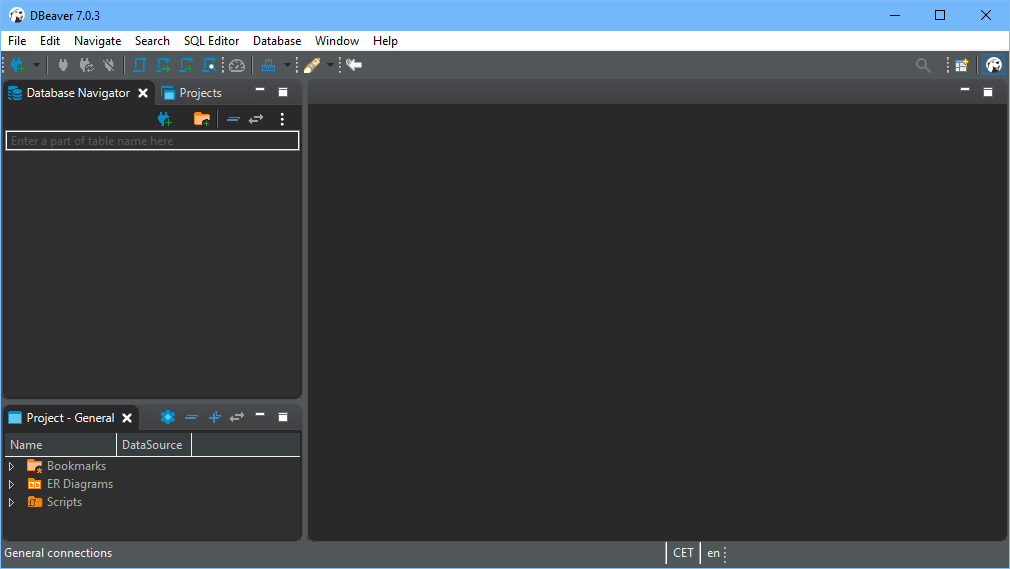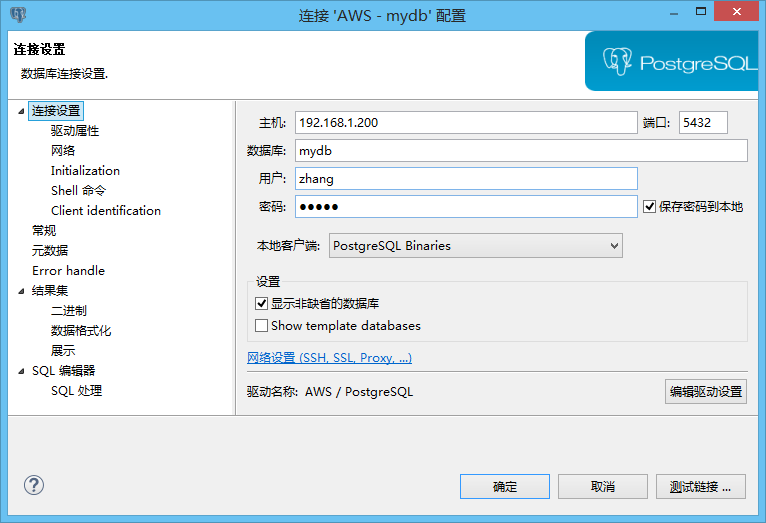


A single index scan can only use query clauses that use the index's columns with operators of its operator class and are joined with AND. For example, given an index on (a, b) a query condition like WHERE a = 5 AND b = 6 could use the index, but a query like WHERE a = 5 OR b = 6 could not directly use the index.
PostgreSQL offers two types for storing JSON data: json and jsonb. To implement efficient query mechanisms for these data types, PostgreSQL also provides the jsonpath data type described in Section 8.14.6. The json and jsonb data types accept almost identical sets of values as input. The major practical difference is one of efficiency. I am completely new to SQL, PostgreSQL, and DBeaver. When trying to simply query a table from a database. Answered Sep 7 '17 at 12:07. Vao Tsun Vao Tsun. 37.1k 8 8 gold badges 69 69 silver badges 95 95 bronze badges. Thanks, I figured it out a few hours (lol). I recently installed on a Windows PC and wish to access a database on a remote Linux server from it. My Linux username is myusername and I also have a system user psqluser. I also have two existing PostgreSQL databases with the same name as their respective user. DBeaver Universal Database Tool Free multi-platform database tool for developers, database administrators, analysts and all people who need to work with databases. Supports all popular databases: MySQL, PostgreSQL, SQLite, Oracle, DB2, SQL Server, Sybase, MS Access, Teradata, Firebird, Apache Hive, Phoenix, Presto, etc.
Dbeaver Postgresql 12 2
Fortunately, PostgreSQL has the ability to combine multiple indexes (including multiple uses of the same index) to handle cases that cannot be implemented by single index scans. The system can form AND and OR conditions across several index scans. For example, a query like WHERE x = 42 OR x = 47 OR x = 53 OR x = 99 could be broken down into four separate scans of an index on x, each scan using one of the query clauses. The results of these scans are then ORed together to produce the result. Another example is that if we have separate indexes on x and y, one possible implementation of a query like WHERE x = 5 AND y = 6 is to use each index with the appropriate query clause and then AND together the index results to identify the result rows.
To combine multiple indexes, the system scans each needed index and prepares a bitmap in memory giving the locations of table rows that are reported as matching that index's conditions. The bitmaps are then ANDed and ORed together as needed by the query. Finally, the actual table rows are visited and returned. The table rows are visited in physical order, because that is how the bitmap is laid out; this means that any ordering of the original indexes is lost, and so a separate sort step will be needed if the query has an ORDER BY clause. For this reason, and because each additional index scan adds extra time, the planner will sometimes choose to use a simple index scan even though additional indexes are available that could have been used as well.
Dbeaver Postgresql Ssl

In all but the simplest applications, there are various combinations of indexes that might be useful, and the database developer must make trade-offs to decide which indexes to provide. Sometimes multicolumn indexes are best, but sometimes it's better to create separate indexes and rely on the index-combination feature. For example, if your workload includes a mix of queries that sometimes involve only column x, sometimes only column y, and sometimes both columns, you might choose to create two separate indexes on x and y, relying on index combination to process the queries that use both columns. You could also create a multicolumn index on (x, y). This index would typically be more efficient than index combination for queries involving both columns, but as discussed in Section 11.3, it would be almost useless for queries involving only y, so it should not be the only index. A combination of the multicolumn index and a separate index on y would serve reasonably well. For queries involving only x, the multicolumn index could be used, though it would be larger and hence slower than an index on x alone. The last alternative is to create all three indexes, but this is probably only reasonable if the table is searched much more often than it is updated and all three types of query are common. If one of the types of query is much less common than the others, you'd probably settle for creating just the two indexes that best match the common types.


Comments are closed.